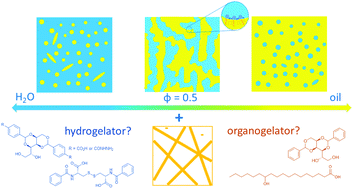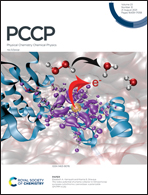From water-rich to oil-rich gelled non-toxic microemulsions†
Abstract
Gelled non-toxic microemulsions have great potential in transdermal drug delivery: the microemulsion provides an optimum solubilizing capacity for drugs and promotes drug permeation through the skin barrier, while the gel network provides mechanical stability. We have formulated such a gelled non-toxic microemulsion consisting of H2O – isopropyl myristate (IPM) – Plantacare 1200 UP (technical-grade alkyl polyglucoside with an average composition of C12G1.4) – 1,2-octanediol in the presence of the low molecular weight gelator (LMWG) 1,3:2,4-dibenzylidene-D-sorbitol (DBS) at an oil-to-water ratio of ϕ = 0.50. The study at hand aimed to develop gelled non-toxic microemulsions that can contain both oil- and water-soluble drugs and are either water- or oil-based, depending on the application. To accomplish this, we varied the oil-to-water ratio from being water-rich to oil-rich, i.e. 0.2 ≤ ϕ ≤ 0.8. Phase studies were carried out along the middle phase trajectory, and a suitable LMWG was identified for all ϕ-ratios. Electrical conductivity measurements showed that the structure can be tuned from water- to oil-continuous by adjusting the amount of 1,2-octanediol and ϕ-ratios. The existence of the gel network was visualized by freeze-fracture electron microscopy (FFEM) at three different ϕ-ratios. We found that all systems from ϕ = 0.35 to ϕ = 0.80 form strong gels with nearly the same rheological behavior, while the system with ϕ = 0.20 is a much weaker gel. We attribute this behavior on the one hand to the microemulsion microstructure and on the other hand to the solvent-dependent gelation properties of DBS, which can be described by the Hansen solubility parameters (HSPs).



 Please wait while we load your content...
Please wait while we load your content...